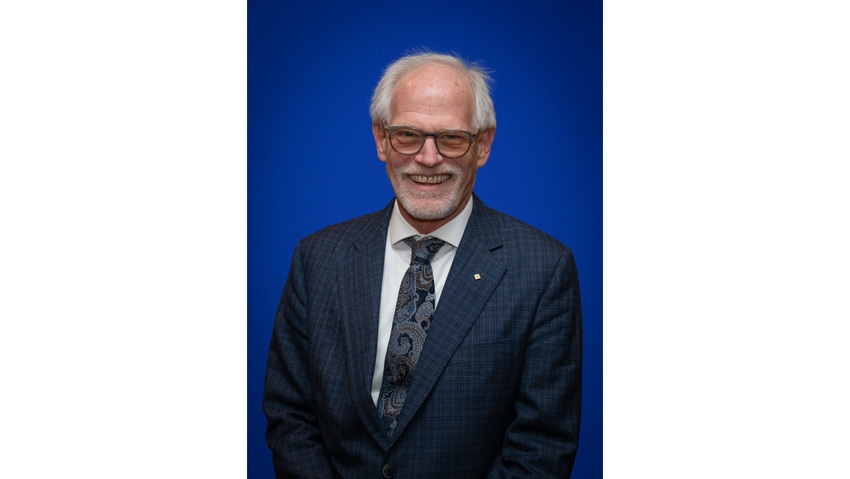IEEE President Speaks on All Matters Electronics
Ahead of his upcoming keynote speech at DesignCon, Tom Coughlin gives his thoughts on myriad issues related to electronics.

Tom Coughlin, President of IEEE (Institute of Electrical and Electronics Engineers), brings a rich technical and business background to his post at the head of arguably the electronics industry’s most respected association promoting the educational and career well-being of electronics engineers worldwide. He spent many years working in the digital storage industry, and not surprisingly, is intimately familiar with products such as hard disk drives, solid state drives, storage area network, and network attached storage. But more important, Coughlin’s wide-ranging knowledge of both the technical trends and underlying economic, educational, and training issues surrounding the electronics industry suits him well to spearheading IEEE activities, and to kicking off the DesignCon technical program with a keynote speech on Tuesday, January 30th titled, “Global Semiconductor Trends: A Roadmap for the Future.”
Design News caught up with Coughlin recently during a conference call and spoke about not only current semiconductor trends but also some of the underlying issues that affect the growth of the electronics industry.
Growth Resuming
For 2024, Coughlin sees the electronics industry returning to a more normal growth period after several years of disruption caused by the COVID-19 pandemic. “COVID caused a lot of supply-chain issues and reactions to supply-chain issues,” Coughlin told Design News. Giving the example of the memry market, Coughlin added, “OEMs ordered more than needed, particularly DRAM and NAND Flash, causing prices to substantially drop and prompting Samsung and other memory suppliers to cut production.”
But with an uptick in memory demand due to high-end computing, AI, and the IoT, Coughlin sees more stability in sectors such as memory, as excess inventories dwindle.
AI Trends
With AI and machine learning ramping up, Coughlin sees a more pronounced trend toward not only GPUs and accelerators, but also more domain-specific processors. He foresees more applications where accelerators would be located closer to memory or other storage devices to reduce latency issues. Coughlin also expects interconnect protocols such as CXL 3.0 to gain importance as the need grows for processors and accelerators to share memory resources and lower overall system costs.
The Word on Chiplets
With the need for processors with higher functionality, Coughlin believes current system-on-chip technologies will be hard pressed to keep up with the demands of high-speed computing. He believes the trend towards chiplets would continue to grow, but called for developing processes that are more cost-effective. “We’re going to see the use of less expensive approaches such as planar IDE open up heterogenous integration.” Coughlin also reiterated the need to continue building the chiplet supply-chain infrastructure, with the help of standards such as UCIe.
One issue likely to surface with chiplets as well as with other high-end processors will be cooling. “The cooling of chiplets will become a bigger issue with heterogenous integration, as chips are stacked,” Coughin said. As far as quantum computing, Coughlin noted that temperatures reaching cryogenic levels will be needed to ensue the stability of Qbits.
Meeting the Needs of Onshore Plants
With the help of initiatives such as the CHIPS Act, semiconductor companies are increasingly deciding to locate more plants onshore in the U.S. This even includes offshore foundry companies such as TSMC, which is setting up a plant in Arizona. Coughlin said a key challenge will be getting the manpower to staff the new plants, which are expected to come online later this decade.
Coughlin views the manpower shortage as a critical factor and noted the IEEE has been trying to tackle the issue through meetings and other programs. “We need to build the curricula to educate future engineers and technicians, and this also involves training those who will educate,” Coughlin said.
The Quest for Space
While there are many terrestrial challenges where electronics will be called on to help solve, the frontier of outer space will also vie for electronics development as manned space missions return. For instance, Coughlin foresees the need to develop space-based communications networks and data center infrastructure that can process data at laser-like speed to overcome latency issues. He also noted the challenges of ensuring semiconductors and other electronics used in outer space are hardened against harmful radiation.
About the Author(s)
You May Also Like





